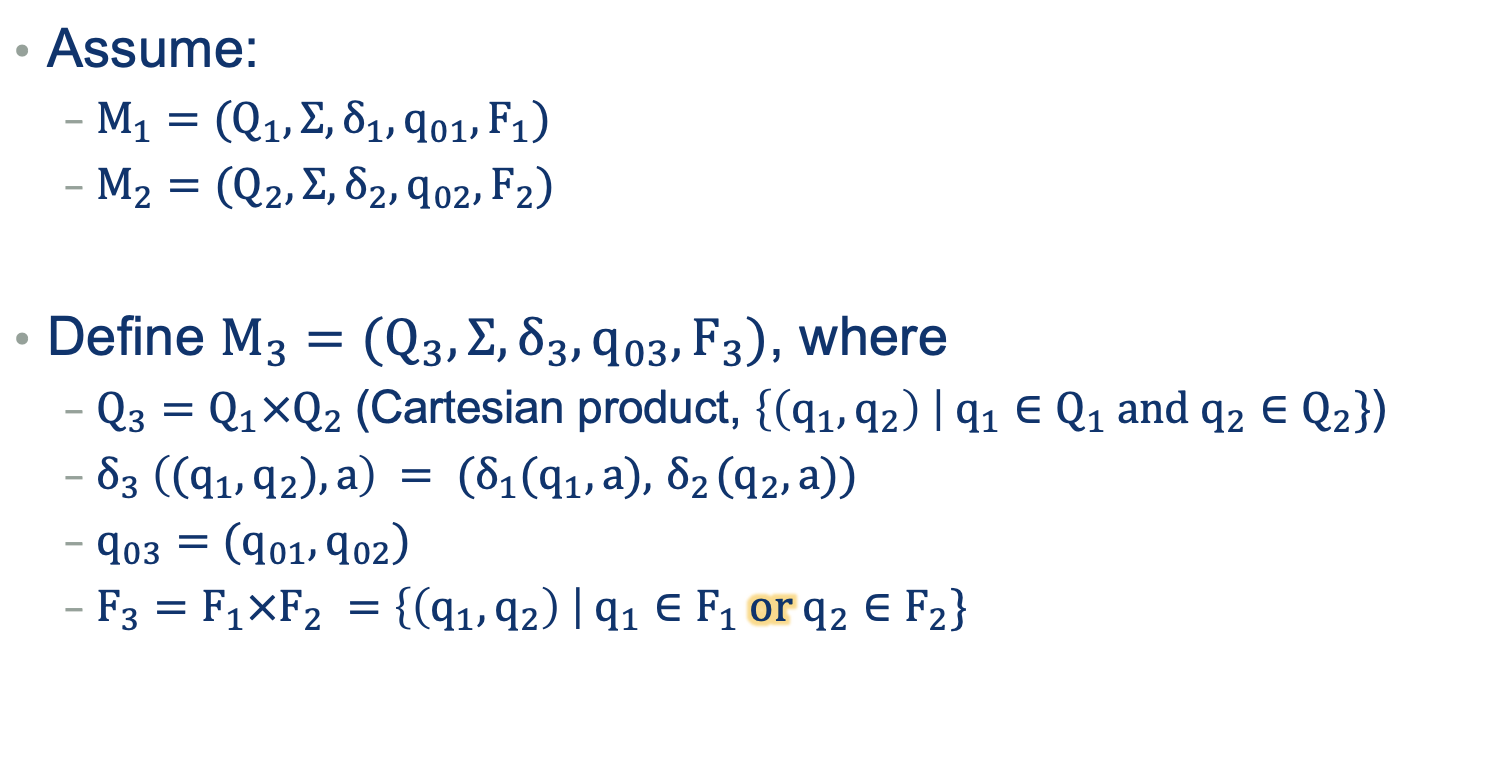Lecture Notes 06:
Practice with Regular Expressions
Outline
This class we'll discuss:
- RE power
- Algorithms: Code, RegExes, and Diagrams
- Intro to Finite Automatons
Recap: RegExes, how powerful are they?
For the the Machine Abstraction of Regular Expressions, we can ask:
what problems can they solve?
In other words: Which Language sets can they generate/accept?
Regular Languages are more powerful than Finite Languages (can encompass more)

Still confused about RExs? Go to Office Hours with Winnie!! (and with me)
Algorithms: Code, RegExes, and Diagrams
As we saw above, an algorithm can be encoded as:
- RegEx
- (pseudo) Code
But we know that a piece of code can also be drawn using things like a "Flow Diagram"!
In this section, we'll use a special type of diagram called a
State Diagram.
State Diagram
A State diagram looks like this:
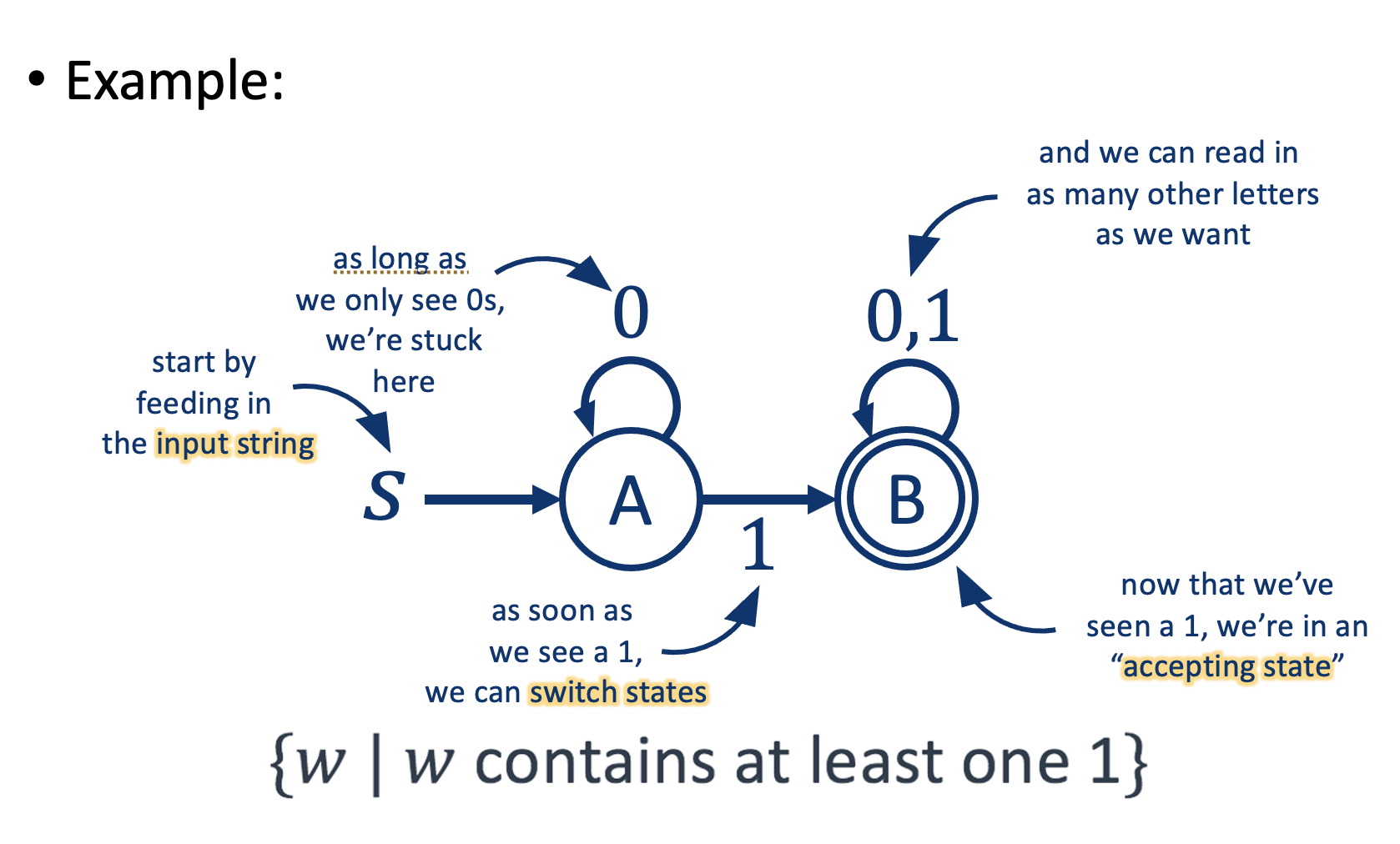
Finite Automaton AKA: Finite State Machine (FSM)
- Finite number of states
- Follows Rules that have been programmed beforehand
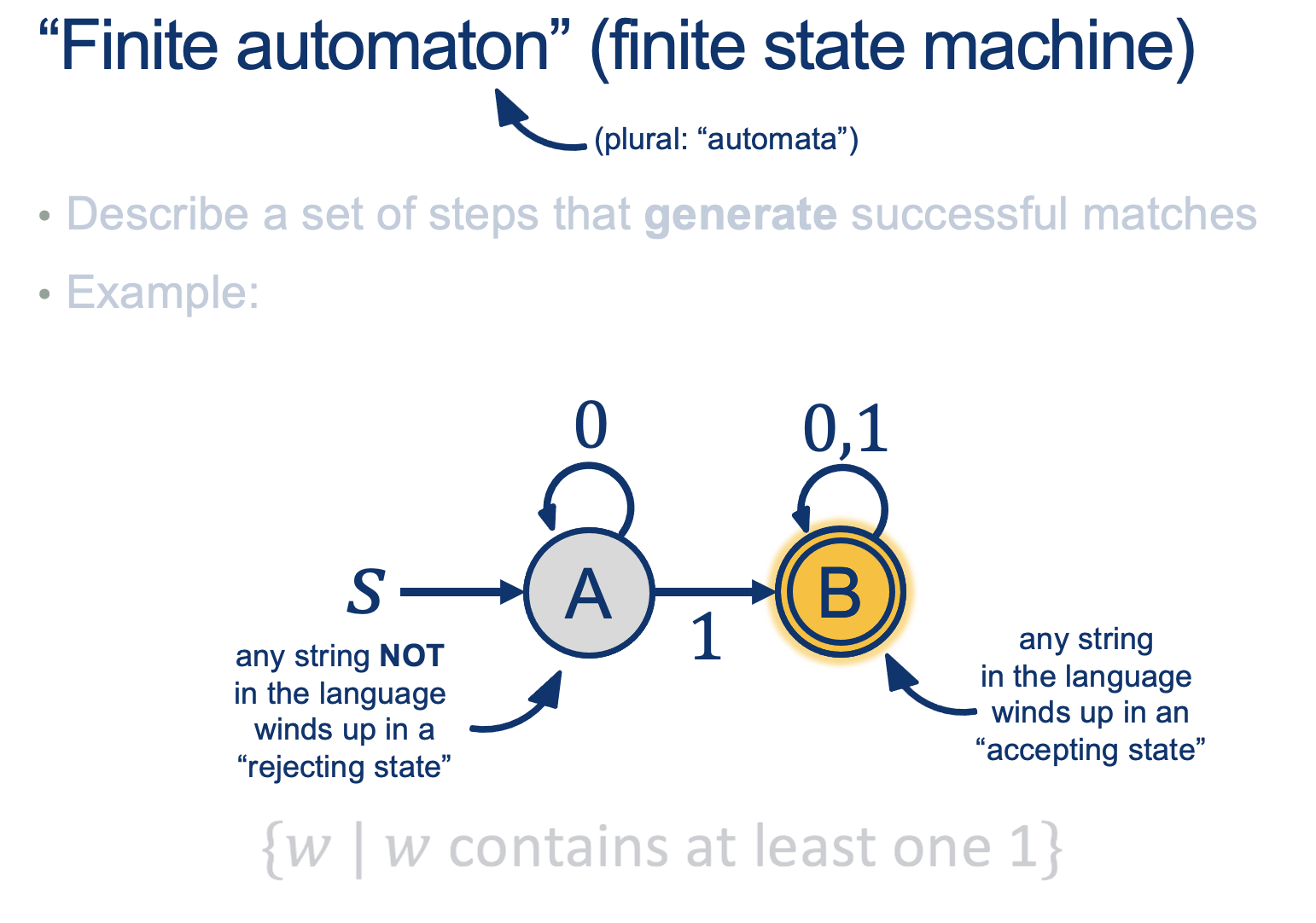
Operation Examples
Example 01: Processing a String
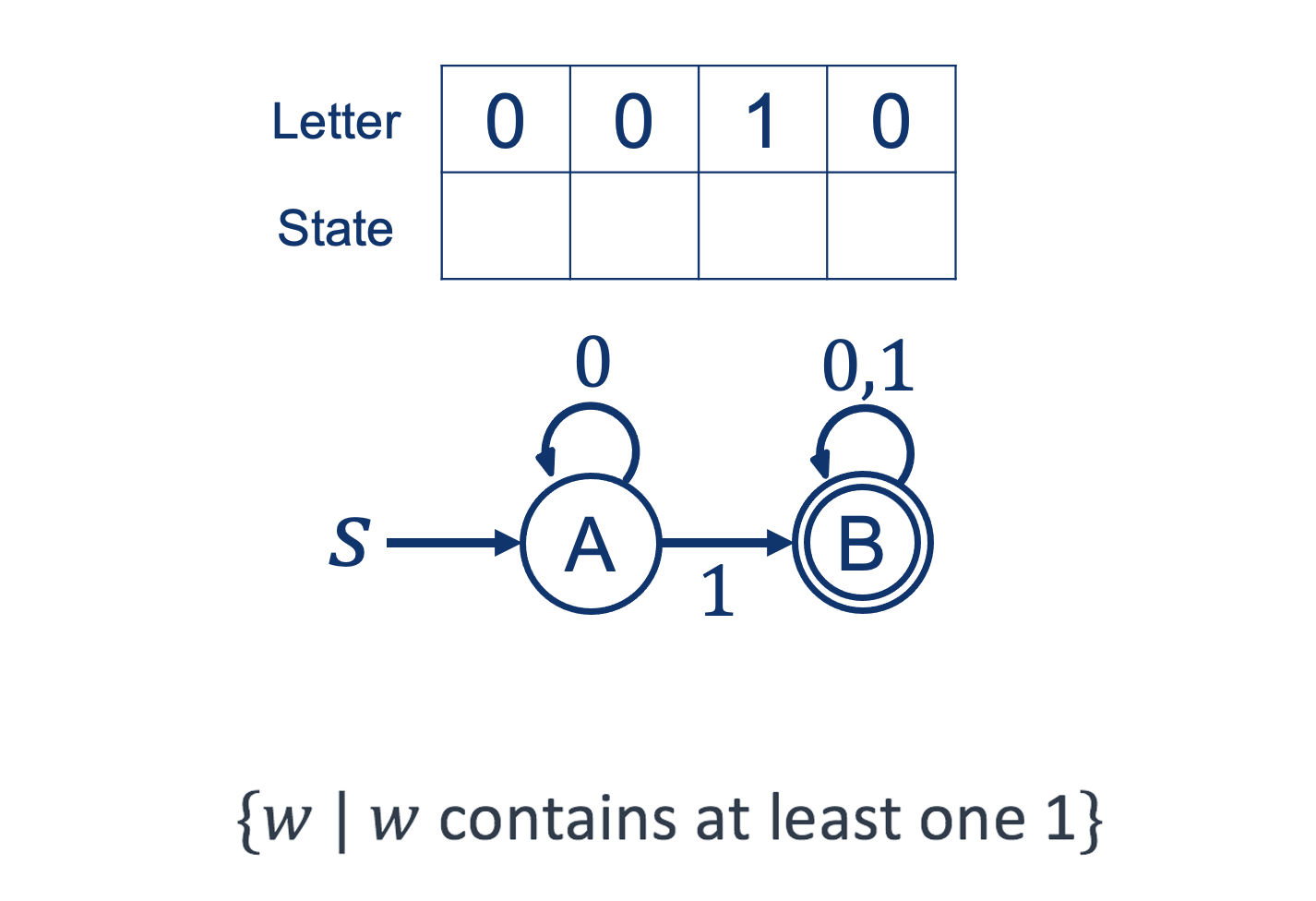
Example 02: Processing a String

Example 03: Processing a String
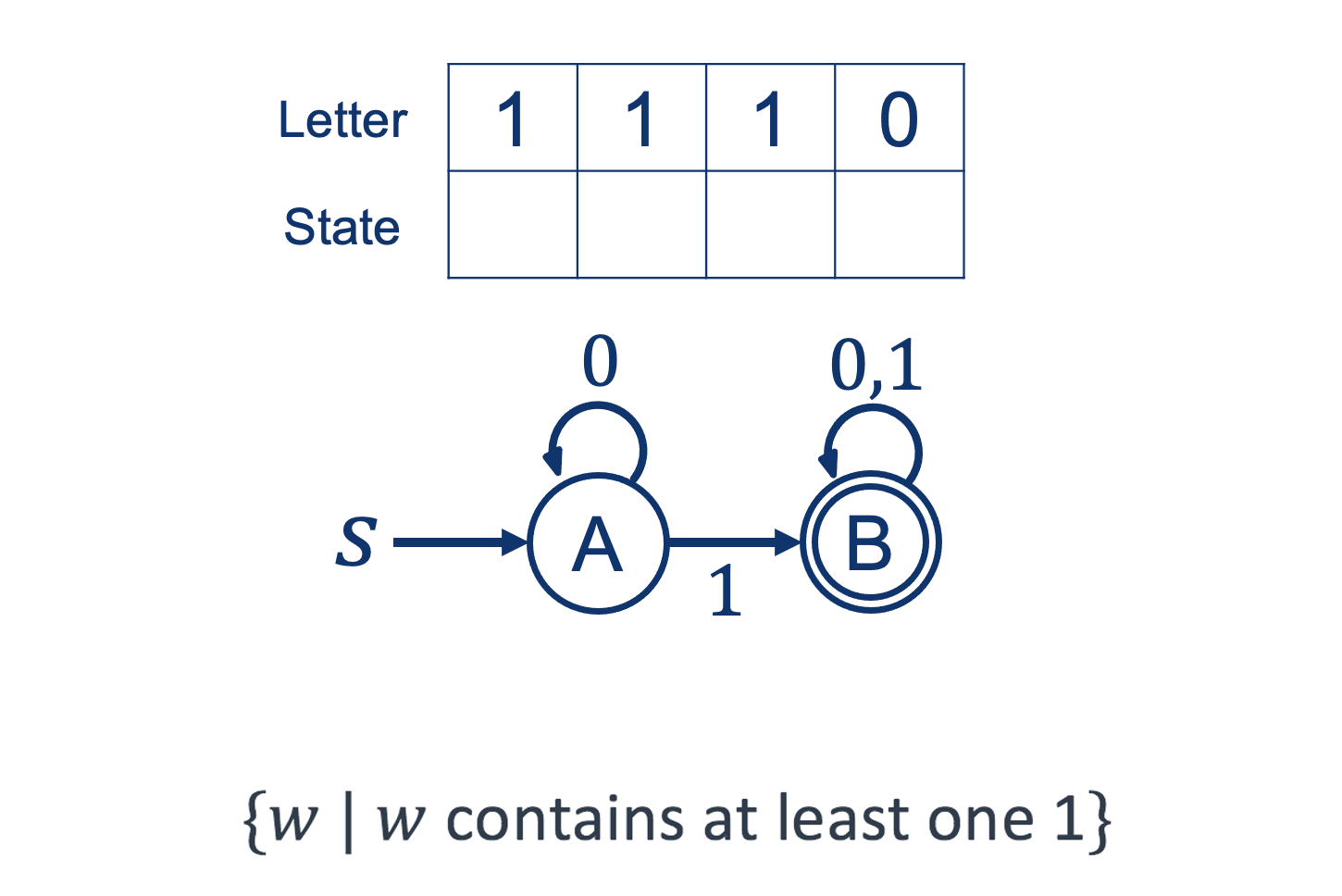 Activity 1
Activity 1 [2 minutes]:
Try to build your own machine. One that "Accepts" this set:

(Wait; then Click)
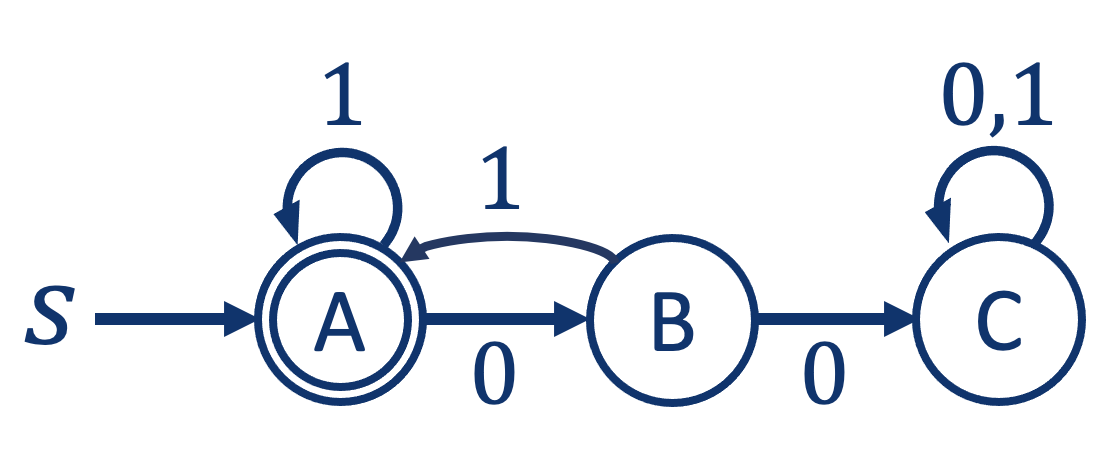
Alphabets and languages

Formal Definition

Our Last Example:
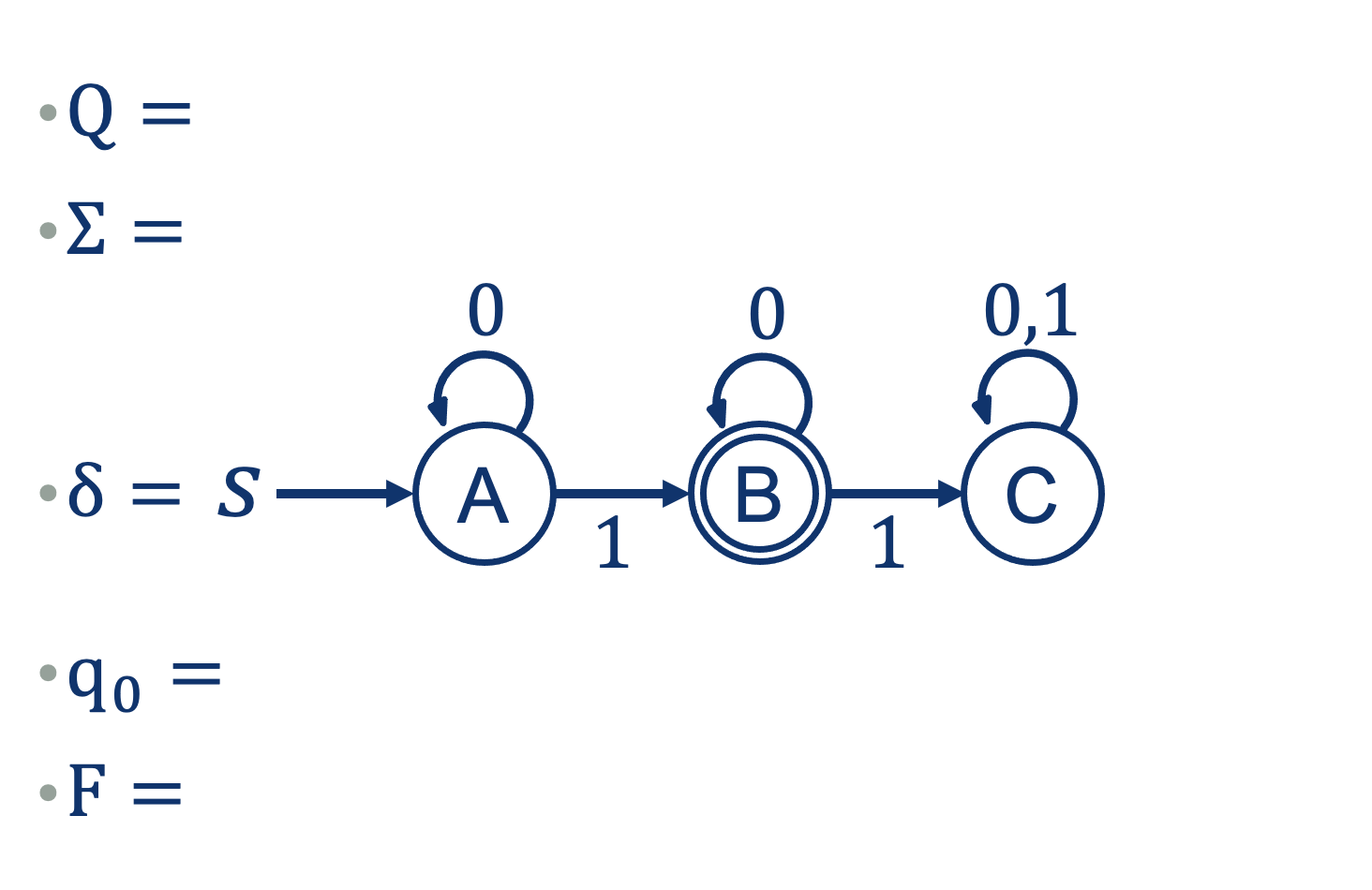
Operators in FSMs: OR
How might we handle a language that contains an or?
Example:
{w|w doesn’t contain either 00 or 11 as a substring}
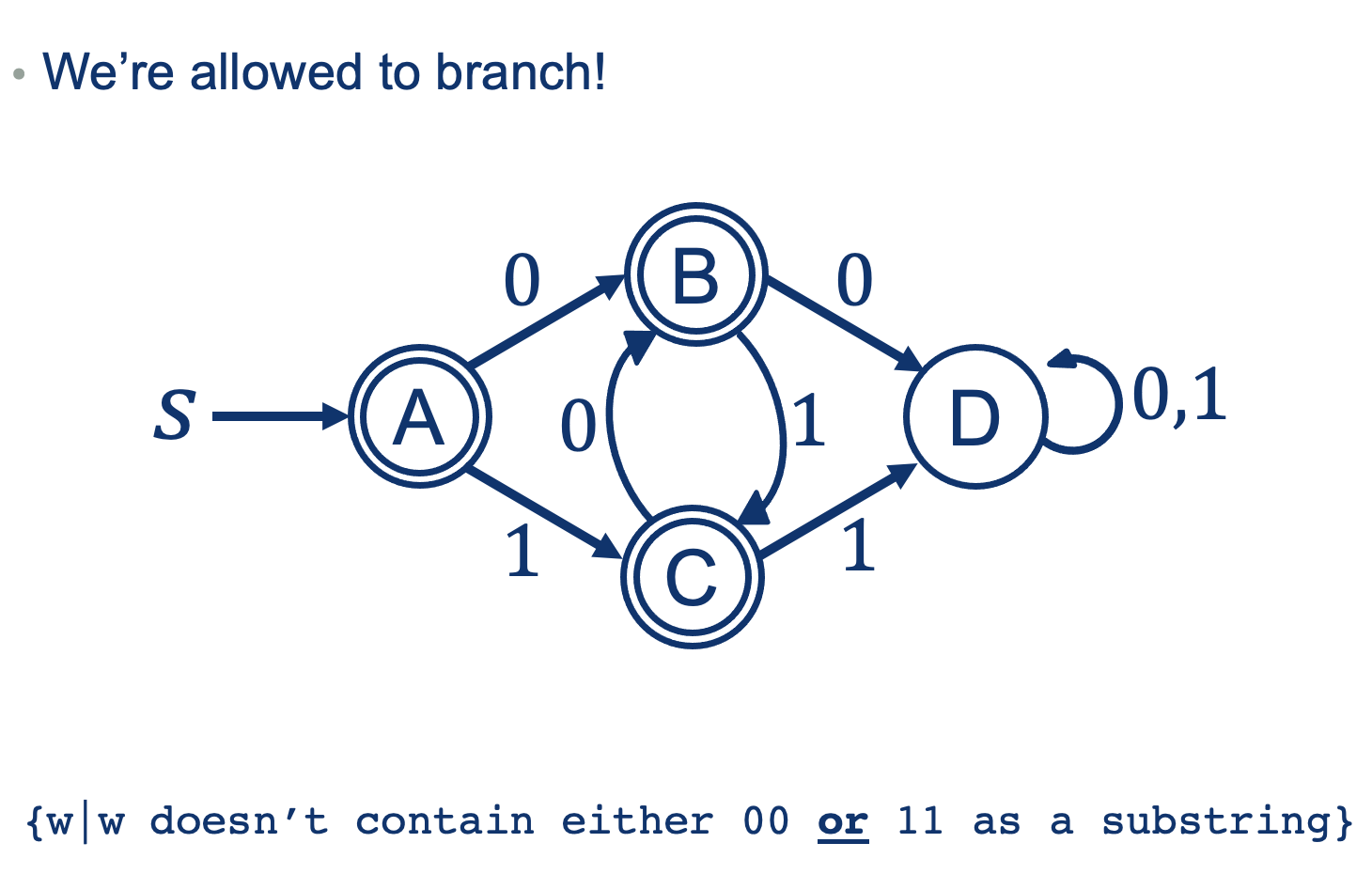
Let's try one basic example:
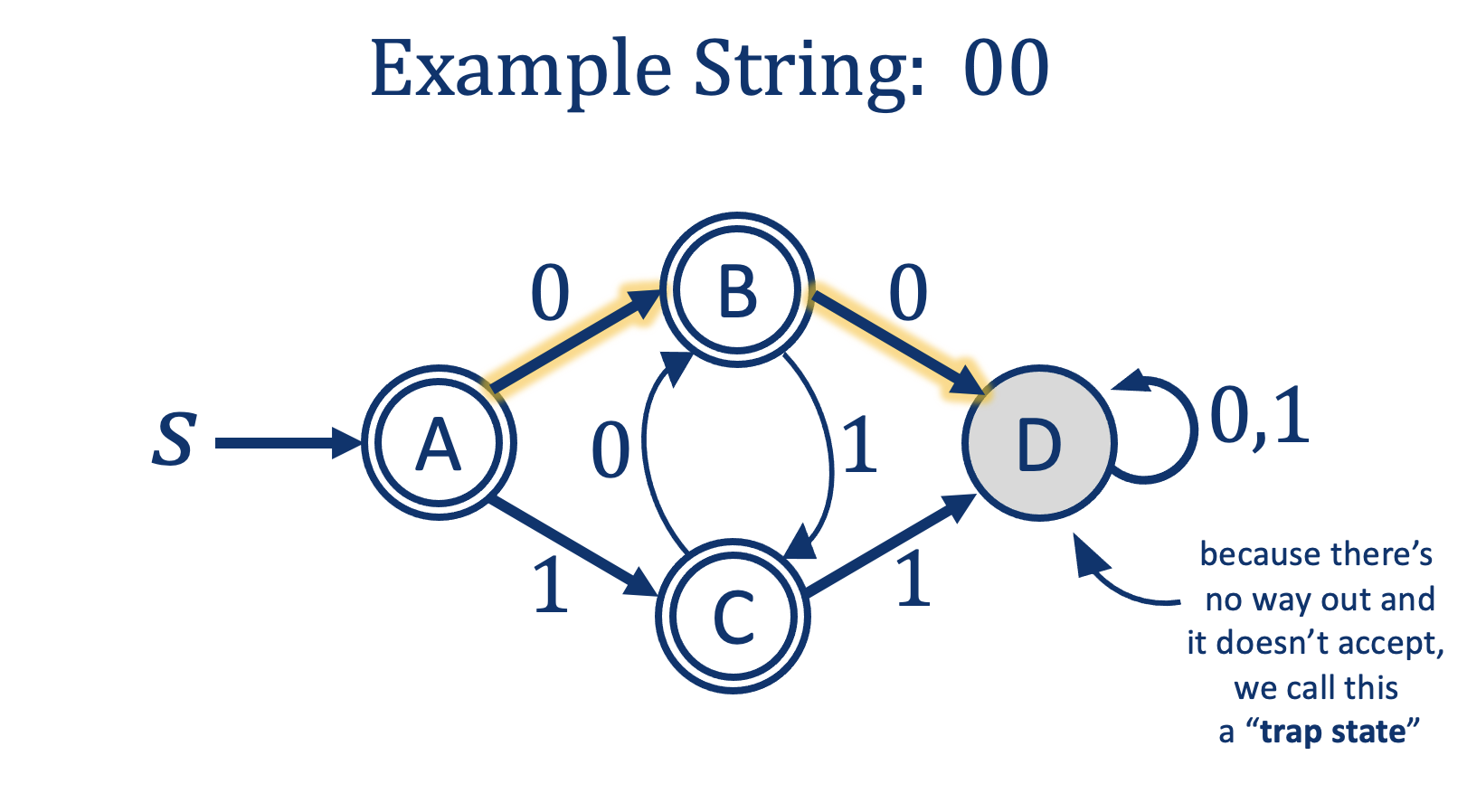 Activity 2
Activity 2 [2 minutes]:
Explain the sequence of states for these words:
[2 minutes]:
Answer the following questions:
What is the descriptive power of Finite Automata?
(Wait; then Click)
We need to compare it with regular expressions... we'll do that bit by bit.

Are there languages that Cannot be described by a finite automaton?
(try to come up with a counter example)
(Wait; then Click)
YES! NON Regular Languages!
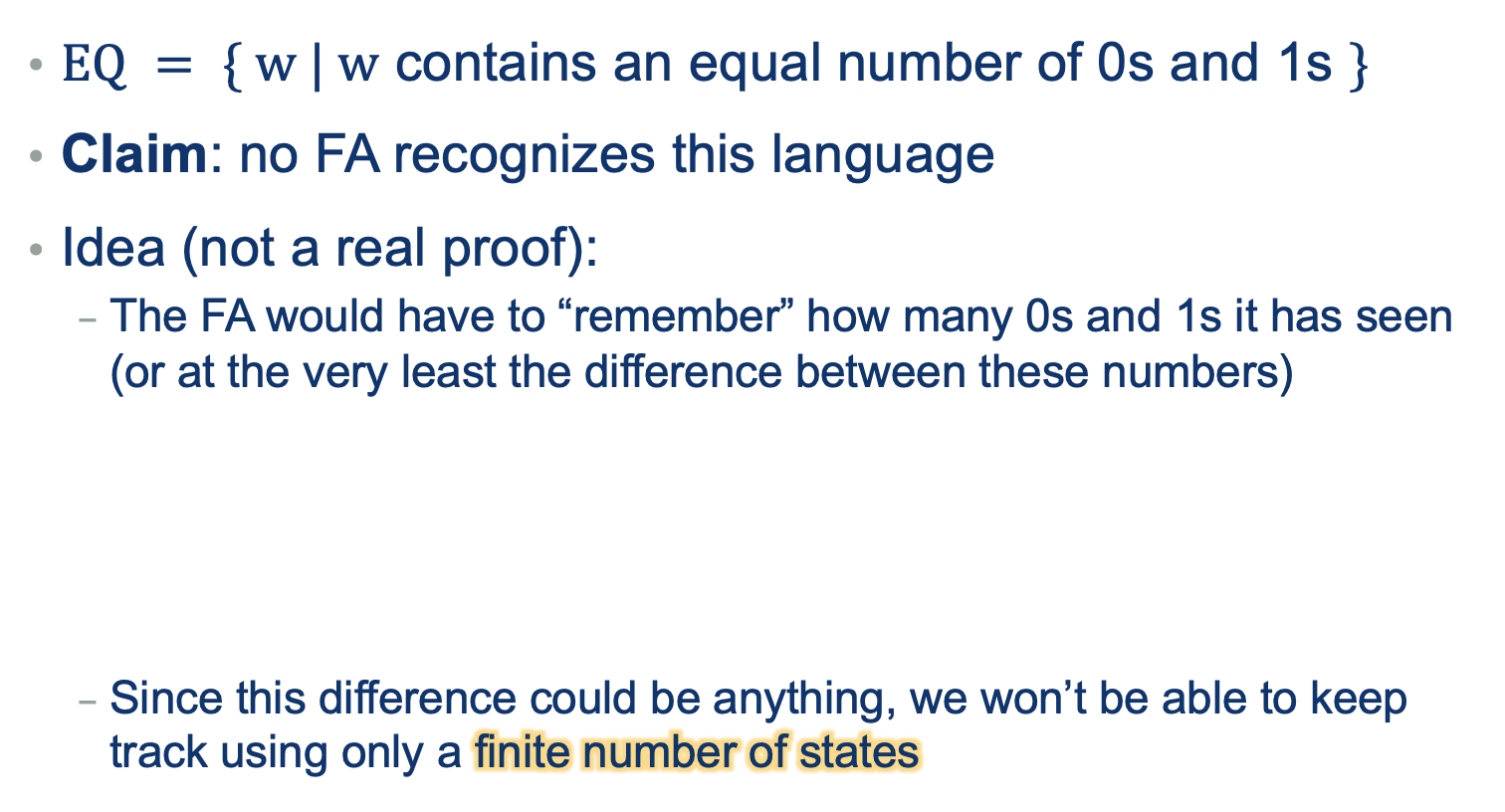
Useful Properties
These are some properties that can help you deduce, generalize, or analyze FSMs with respect to their RegEx and Regular Languages.
Complement
IF a Language \(L_1\) is recognizable by an FA \( M_1\),
is language \( (L_1)^{c} \) also recognizable by some FA?
Or in other words,
\[\exists M_2 \quad | \quad L(M_2) = L(M_1)^{c} \]
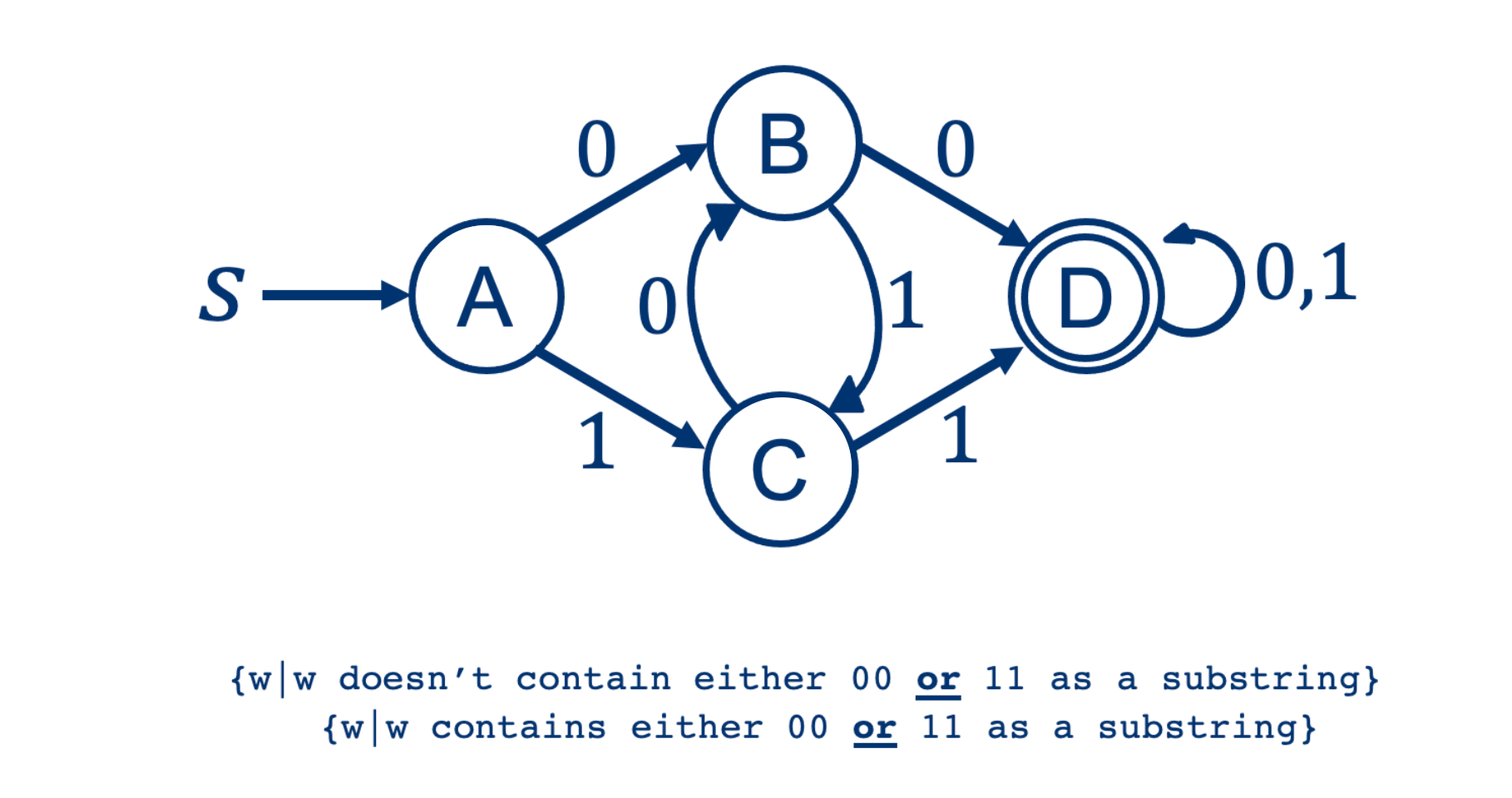
Intersection
 Activity 4
Activity 4 [2 minutes]:
How would you prove this (by construction)?
(Wait; then Click)
- run both machines “in parallel”
- accept if (and only if) both reach an accepting state
Example:
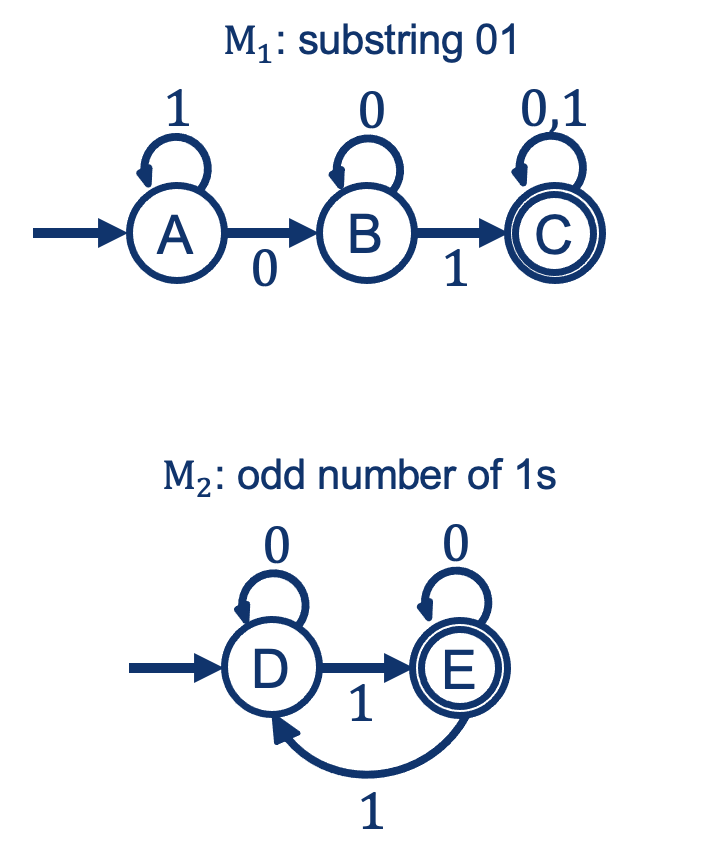
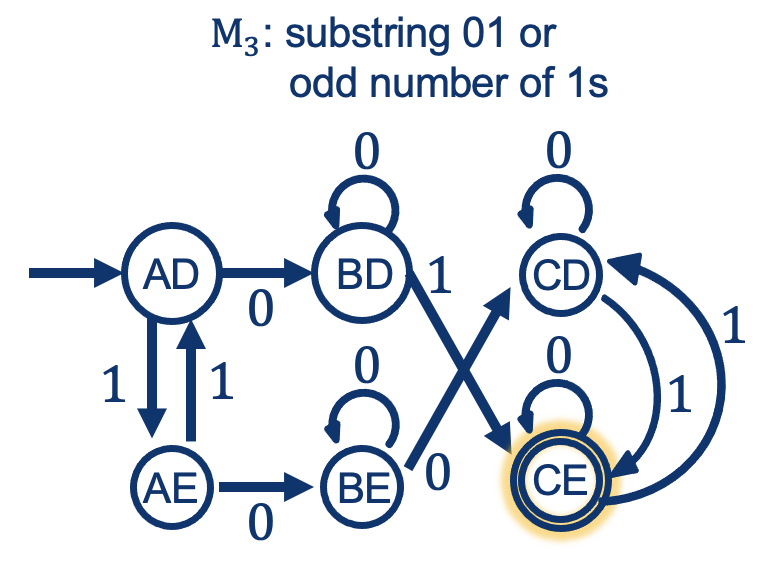
Intersection: General Rule
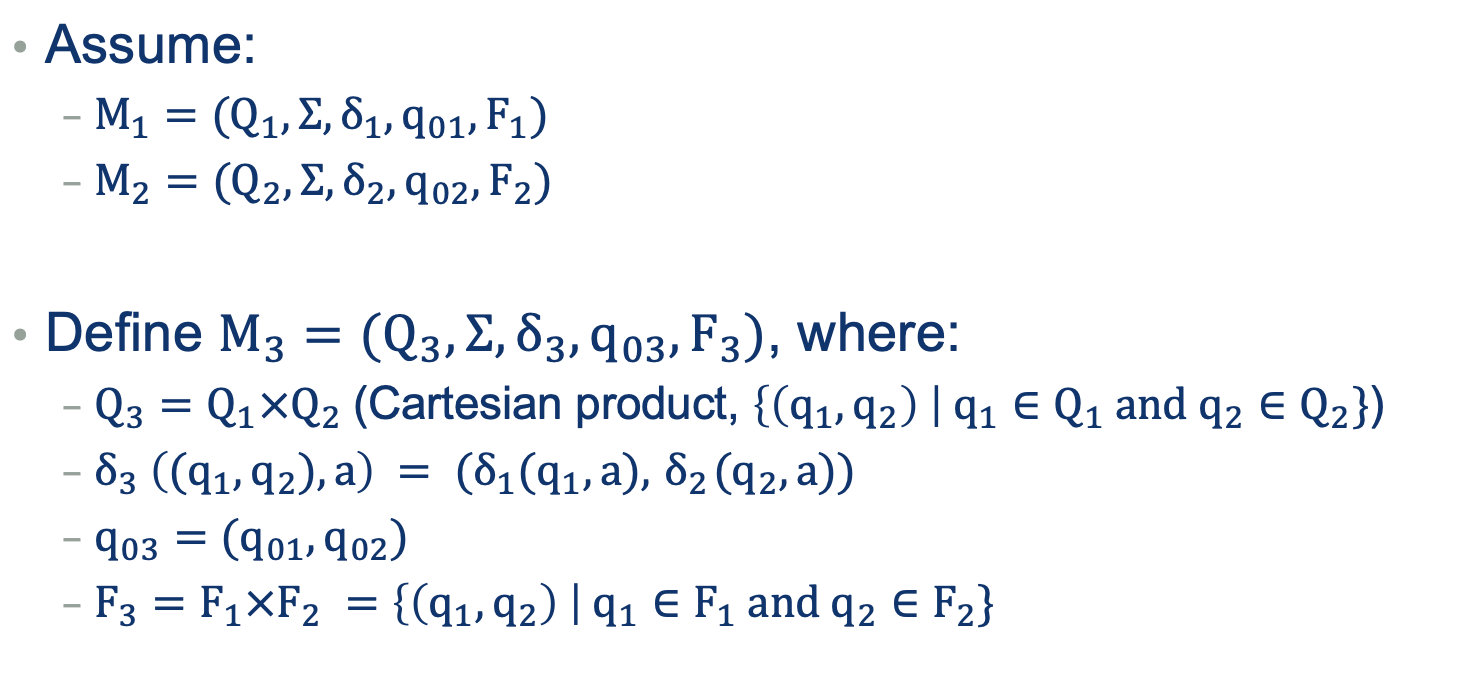
Union
 Activity 5
Activity 5 [2 minutes]:
How would you prove this (by construction)?
(Wait; then Click)
- run both machines “in parallel”
- accept if either reach an accepting state
Example:
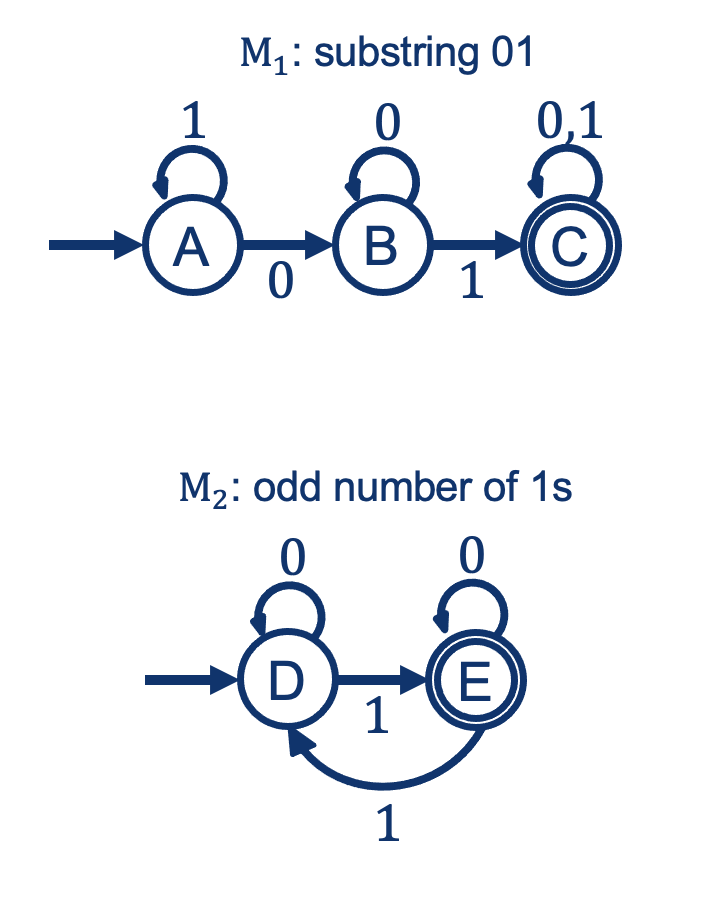
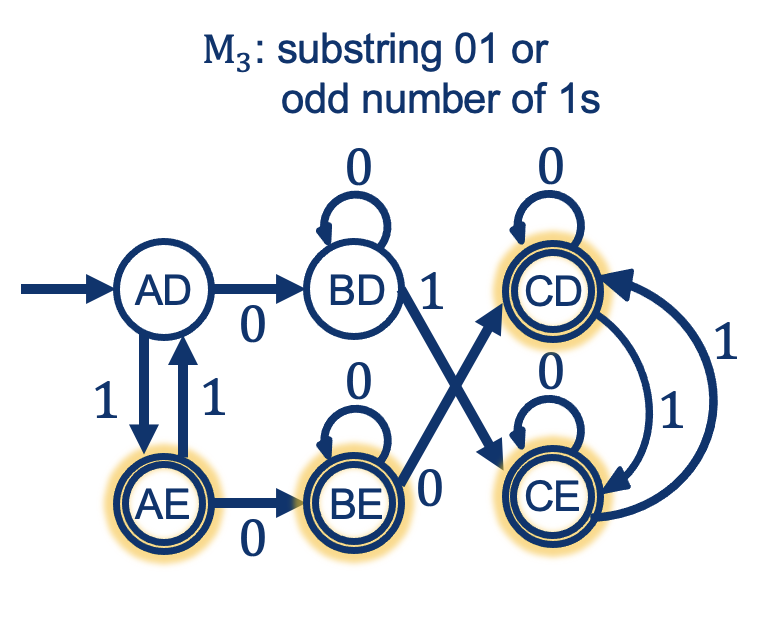
Union: General Rule
